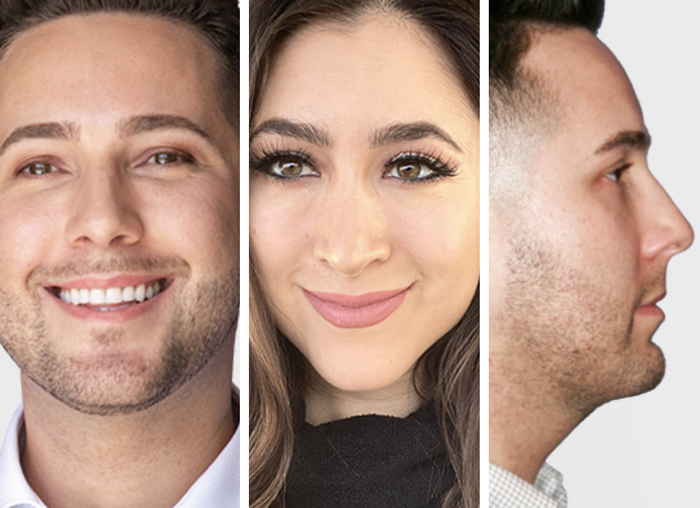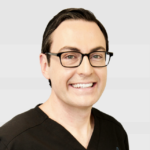Many patients want a different shape or more projection of their chin, but don’t want to commit to a permanent change. For these patients, a great procedure is non-surgical chin augmentation. Making the chin bigger or giving it more shape and definition can be achieved with soft tissue fillers, such as Radiesse® or Voluma®. This procedure can also fill in the groove that forms between the chin and the lower cheek areas along the jawline as we age (the pre-jowl sulcus). This can be performed alone or in combination with other procedures such as rhinoplasty (“nose job” surgery or nose reshaping) and non-surgical rhinoplasty.
Explore our
Patient Gallery
*Actual patients in photos

Dr. Ransom performs most non-surgical chin augmentation using two filler materials. The most common is Radiesse®, which is made of biocompatible calcium hydroxyapatite – a natural component of bone. This filler is relatively firm and is placed deep along the bony prominence of the chin. Radiesse® lasts between 12 and 18 months in this area for most patients. Another option is Voluma®, the newest of the soft tissue fillers. Voluma® is made from cross-linked hyaluronic acid (HA), another naturally-occurring component of cartilage and connective tissue. Voluma® lasts longer than the other HA fillers – up to 2 years! Finally, for patients who are just trying out facial enhancement, shorter-lasting HA fillers are available. This would include Juvederm® or Perlane®, which last between 6 and 12 months, depending on the individual patient’s unique skin and muscle structure and metabolism.
As with any injectable treatment, Dr. Ransom strives to provide the most comfortable experience possible. This includes the use of topical numbing creams, including numbing medicine in all injectable fillers, and providing icepacks after treatment.
Who is a candidate?
Anyone who desires increased projection of the chin, a more defined jawline, or a better neck contour may be a candidate for non-surgical chin augmentation. The key to any facial enhancement is an open dialogue with the patient regarding aesthetic goals. Identifying the areas to be treated, and precise placement of the fillers, requires an artistic eye and a gentle touch. Our goal is to achieve the greatest aesthetic enhancement with a natural-looking result. Dr. Ransom will work closely with you throughout this process.
Frequently Asked Questions
Please note that all patients are different and individual healing times and results may vary. The statements regarding procedures and recovery made here are general rules.
Soft tissue fillers are slowly broken down by the body over time. The duration of effect is dependent on the type of filler used, and, for HA fillers, the degree of crosslinking in the material. Dr. Ransom prefers to use longer-lasting and thicker fillers for non-surgical chin augmentation. This gives a more reliable effect and is safe because the injections are placed deeply along the bone.
This depends on the type of filler used. HA fillers like Voluma® and Perlane® can be dissolved with small doses of an enzyme called hyaluronidase. For Raidesse®, the body slowly dissolves the filler material over time. There is not an enzyme to dissolve this product, but other techniques can be used to speed up the process.
If you have undergone a non-surgical chin augmentation and like the results, but don’t want to have repeated treatments, there are more permanent options. The most common choice would be placement of a chin implant (see our dedicated procedure page). These are made of a silicone-based plastic (Silastic) come in a variety of shapes and sizes, with a full range to fit your needs. Placement involves a short surgical procedure with minimal downtime.
Dr. Evan Ransom is an Ivy League-educated and Ivy League trained Facial Plastic and Reconstructive Surgeon. He is a Double Board Certified Head and Neck Surgeon and Facial Plastic and Reconstructive Surgery and fellowship-trained in facial plastic, reconstructive, and laser surgery. His practice is in the San Francisco Bay Area, serving patients from San Francisco, Oakland, Marin County, Palo Alto, Silicon Valley, Walnut Creek, the East Bay, and all over Northern California.
 (415) 550-1077
(415) 550-1077 San Francisco
San Francisco




